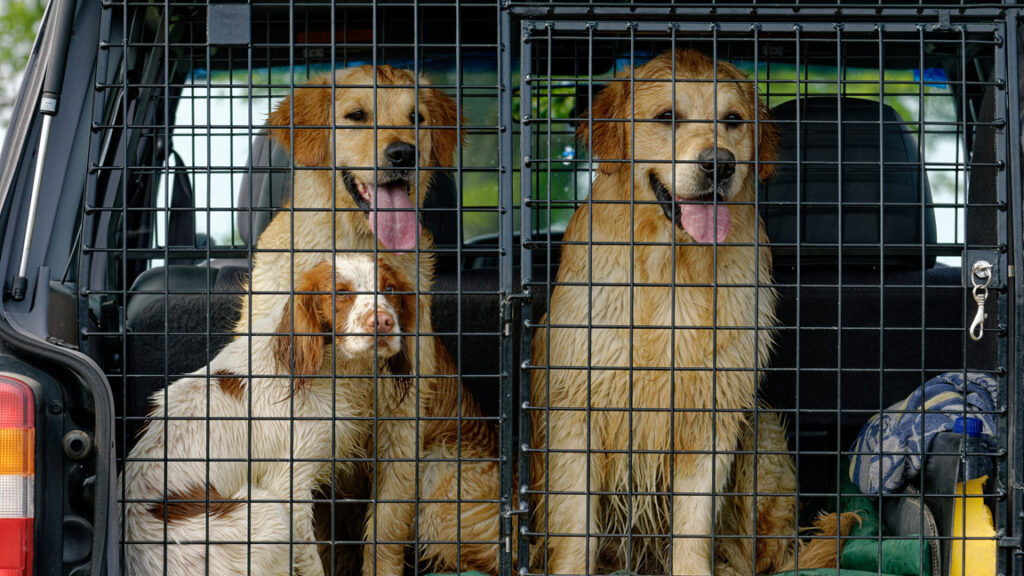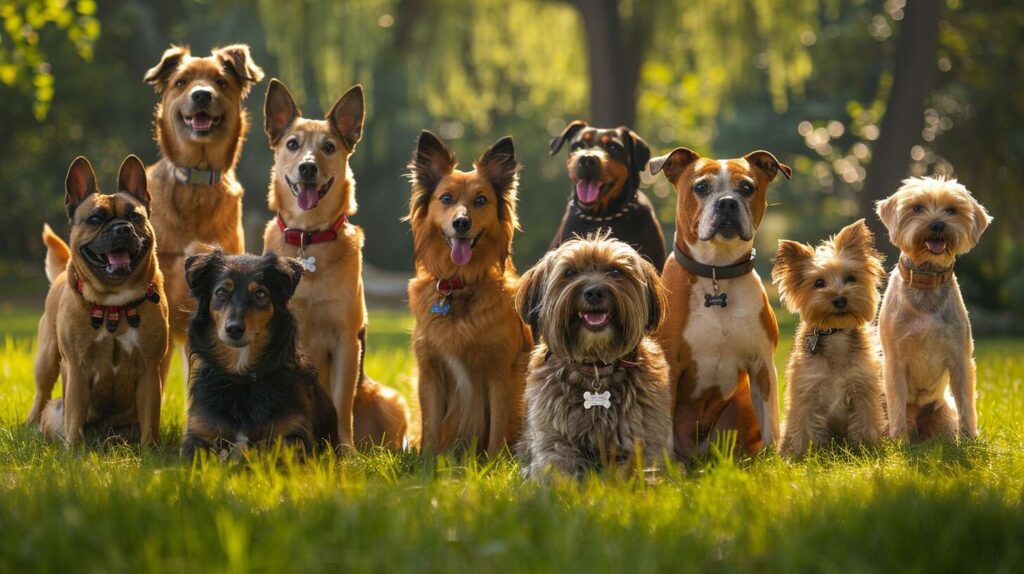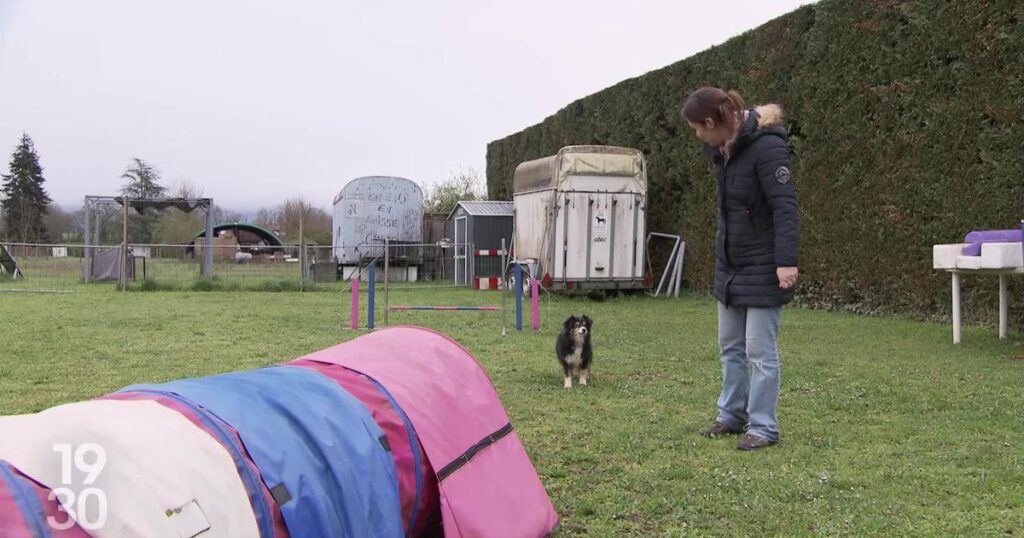
As soon as they are old enough to mate and have puppies, female dogs regularly have periods of heat. But to manage them as best as possible, it is important to know their frequency and their average duration.
A female dog's life is punctuated by several major milestones. The first occur in the first three months of its existence, namely the discovery of the world, weaning and adoption. However, if she is not sterilized, she will subsequently experience another major stage: the arrival of heat. Depending on the breed and size of the species, this phase marking the transition between adolescence and adulthood of the dog occurs between 6 months and 1 year. As soon as they have their first heat, females can have litters. But unlike the ovulation period in women, heat can last for several weeks. And this period can affect the behavior of the female dog.
Heat that generally lasts 3 weeks in female dogs
Whatever its human age equivalent, the dog will have its first heat during its first year of existence. In addition, this heat will return regularly (generally twice a year), throughout its life. Heat periods will only be stopped if the female dog is sterilized as a young or adult. It is important to note that this period with an average duration of 23 days is divided into two periods. The first is proestrus. This lasts between 3 and 20 days and is recognizable by the presence of several physical symptoms. Then comes the second period, estrus, during which the female ovulates and accepts contact with males. In the absence of fertilization, the female dog then goes into a phase of sexual rest which lasts between four and six months depending on the breed.
How do you know if a female dog is in heat?
There are several signs that the female is in proestrus or estrus. First, the dog will have physical symptoms. Her vulva will swell and she may bleed similar to human rules. But these disappear during the period of ovulation. However, it is at the level of behavior that heat is most recognized. During the pro-estrus, the female dog can be aggressive, both with other dogs and with humans. However, some dogs are more cuddly during this period. Depending on the dog's sensitivity, she may also start to squeal or try to run away from the house.
How does a dog's period work?
Understanding a female dog's reproductive cycle is essential for anyone with an unspayed female dog. The heat, corresponding to the period of ovulation, usually occur twice a year, with an average duration of three weeks. During this period, various signs may be observed, such as bleeding or changes in behavior. It is important to note that these cycles can vary depending on age, race and individual.
What day of a female dog's heat can be fertilized?
The period of fertility of the female dog during her heat does not correspond to the entire duration of the heat. It is more precisely located during the estrus phase, once ovulation has occurred.
Ovulation usually occurs between the 9th and 10th day of heat, but fertilization is only possible when the oocyte reaches maturity, which requires an additional period of 2 to 4 days. Thus, the peak of fertility is rather around the 12th to 15th day. However, it is important to note that these indications are averages and that the period of fecundability can vary from one female dog to another. Veterinary monitoring may be necessary to precisely determine the most favorable time for reproduction.
What are the signs of heat in dogs?
Signs of heat in dogs can be divided into two categories: physical and behavioral signs. THE physical signs include:
- Swelling of the vulva : This is often the first visible sign.
- Blood loss : They can vary in quantity depending on the female dog.
- More frequent urination : The female dog marks her territory to attract males.
THE behavioral signs are also very revealing:
- Behaviour change : The female dog can be more affectionate, clingy or on the contrary more aggressive.
- Increased interest in male dogs : She may show the desire to reproduce.
All of these signs are not necessarily present simultaneously and can vary from one dog to another.
How long does bleeding last for a dog in heat?
In a female dog's heat cycle, bleeding, also called blood lossgenerally occur during the proestrus phase, which lasts between 3 and 17 days. The duration and intensity of bleeding can vary from one dog to another. Some female dogs may have heavy bleeding throughout proestrus, while others may experience lighter or short-term bleeding. As a general rule, bleeding only lasts about ten days at most. If bleeding persists beyond three weeks, it is recommended to consult a veterinarian.
How do you know when a dog is in heat?
The end of heat in dogs can be determined by physical and behavioral changes. Physically, the dog's vulva, which was swollen during heat, gradually returns to its normal size. The bloody discharge stops and the vulvar discharge becomes clearer. Behaviorally, the female dog who was receptive to males during her estrus, now refuses mating. Carefully monitoring these signs will help you determine when your dog is out of heat.
When does a female dog go into heat for the first time?
A female dog's first heat usually occurs when she reaches puberty, a key time in her sexual development. The exact timing varies depending on the breed and size of the animal.
- At the small breedsthe first heat may occur from the age of 6 months.
- THE medium sized breeds usually see their first heat between 7 and 13 months.
- For the giant breedssexual maturity may be delayed up to 24 monthsalthough the first heat waves can occur as early as the 16th month.
It should be noted that the first heat generally occurs when the female dog has reached approximately two thirds of her final adult weight.
What are the different heat periods for a female dog?
A female dog's heat cycle is divided into four distinct phases:
- THE pro-estrus : This initial phase lasts from 5 to 20 days, begins with the appearance of bleeding and marks the start of heat. Males are attracted to the female, but she refuses mating.
- L'estrus : During this phase, which lasts on average between 7 and 9 days, the female dog is receptive to mating and therefore potentially fertile. It is during this phase that ovulation occurs.
- THE metaestrus : Also called intermediate phase, it lasts approximately two months. This is a period of sexual rest if the female dog has not been impregnated.
- L'anestrus : Last phase of the cycle, it typically lasts 4 to 5 months. The dog is not receptive and shows no signs of heat.
These times are approximate and may vary from female dog to female dog depending on individual factors such as breed or age.
What are the behaviors of a dog in heat?
During her heat period, the dog's behavior may undergo various changes. In general, the female dog can show herself more affectionate or on the contrary, demonstratehustle and D'aggression towards other dogs. It may also present a increase in activitybecoming more playful.
- Territorial marking : It is common to see a female dog in heat urinating more often to mark her territory and signal her availability to surrounding males.
- Change in appetite : Some female dogs may show a decreased appetite during this time.
- “Clingy” behavior : The female dog may become more clingy, constantly seeking the company of her owner.
- Nocturnal behavior : During the night, she may be more agitated.
It is important to remember that these behaviors can vary from one dog to another.
What are the stages of ovulation in a female dog?
Ovulation in a female dog is a key stage of the reproductive cycle and usually occurs during the estrus phase. The female dog's ovarian cycle occurs in several stages:
- Proestrus : This initial phase corresponds to the start of heat, with bloody discharge and increased attractiveness for males, although the female dog refuses mating.
- Estrus : It is during this phase that ovulation takes place, generally between the 9th and 10th day. The female dog is now receptive to males and ready for mating. Ovulation takes place in 6 to 24 hours on both ovaries. The oocytes are mature two days after ovulation and then survive for 2 to 3 days.
- Diestrus and Anoestrus : These two phases follow ovulation and correspond to a period of sexual rest, during which the female dog is no longer receptive.
Please note that these durations are approximate and may vary depending on each female dog.
Why are my dog's udders swollen?
The appearance of swollen udders in a female dog can be due to several factors. During the heat cycle, the dog's mammary glands prepare for possible pregnancy and therefore may swell. Therefore, a slight increase in udder volume during and after heat is a normal phenomenon.
However, there are other causes to consider. For example, a pseudo-pregnancy or nervous pregnancy can cause an increase in the size of the udders. If the udders remain swollen several weeks after the end of the heat, this may indicate pseudo-pregnancy.
Finally, inflammation of the udders, called mastitis, can also be the cause of swollen udders. This condition manifests itself as hard, swollen and painful udders.
How to check the fertility of a female dog?
For check the fertility of a female dog, several methods can be used. A first approach consists of carrying out a vaginal smear to analyze the condition of the cervix. In the absence of symptoms, a hormone test can be done to determine if the female dog is in heat. Another method consists of carrying out a ovarian ultrasound. This examination makes it possible to check whether the oocyte is mature or not, because its image changes between the time of ovulation and the time when it is fertilizable.
Finally, a heat monitoring can be carried out to precisely determine the time of ovulation and optimize the chances of successful mating. It is essential to note that many female dogs do not show typical signs marking the end of their heat. In this case, consultation with a veterinarian may be necessary to determine fertility.
This may also interest you :
⋙ How to cut a dog's nails?
⋙ Where does the wet dog smell come from?
⋙ Your dog hears you while he sleeps!
⋙ Halitosis: what can I do about my dog's bad breath?
⋙ Here are the 10 worst foods not to give to a dog!




